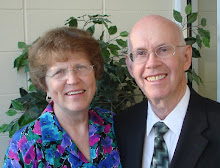LDS.org - News and Events Article - Church Sends Atmit to Ethiopia: "Church Sends Atmit to EthiopiaSeptember 15, 2008 — News from the Church
The Church plans to send to Ethiopia more than 1.4 million pounds (540 tons) of Atmit, special food for the severely malnourished, over a span of three months, with the final shipment scheduled to arrive in the drought-stricken country by November 2008.
At least 14 million Ethiopians are in need of food or cash assistance. While the crisis stemmed mainly from a severe drought that destroyed the entire spring crop in some places, the country has also dealt with high food prices, a number of disasters, and a rebellion in the Somali region that disrupted food delivery.
Remembering the significant aid the Church provided during the 2003 famine, government officials in Ethiopia sent a request for help. The Church answered by setting up a plan to send more than 30 containers of Atmit to the country. Beginning in late August and scheduled to end in October, the Church planned to ship five containers per week to the country, with each shipment taking six to eight weeks to arrive.
As in 2003 the Church worked closely with Project Mercy, a nongovernmental relief agency with experience in Ethiopia. In close coordination with the Ethiopian government, Project Mercy will oversee the distribution of the Atmit.
Atmit is a mixture of oat flour, powdered milk, sugar, salt, vitamins, and minerals that is mixed with water and cooking oil to reach the consistency of cream soup. It has been proven a successful resource for feeding the severely malnourished.
The Church is the only organization that produces Atmit.


















































